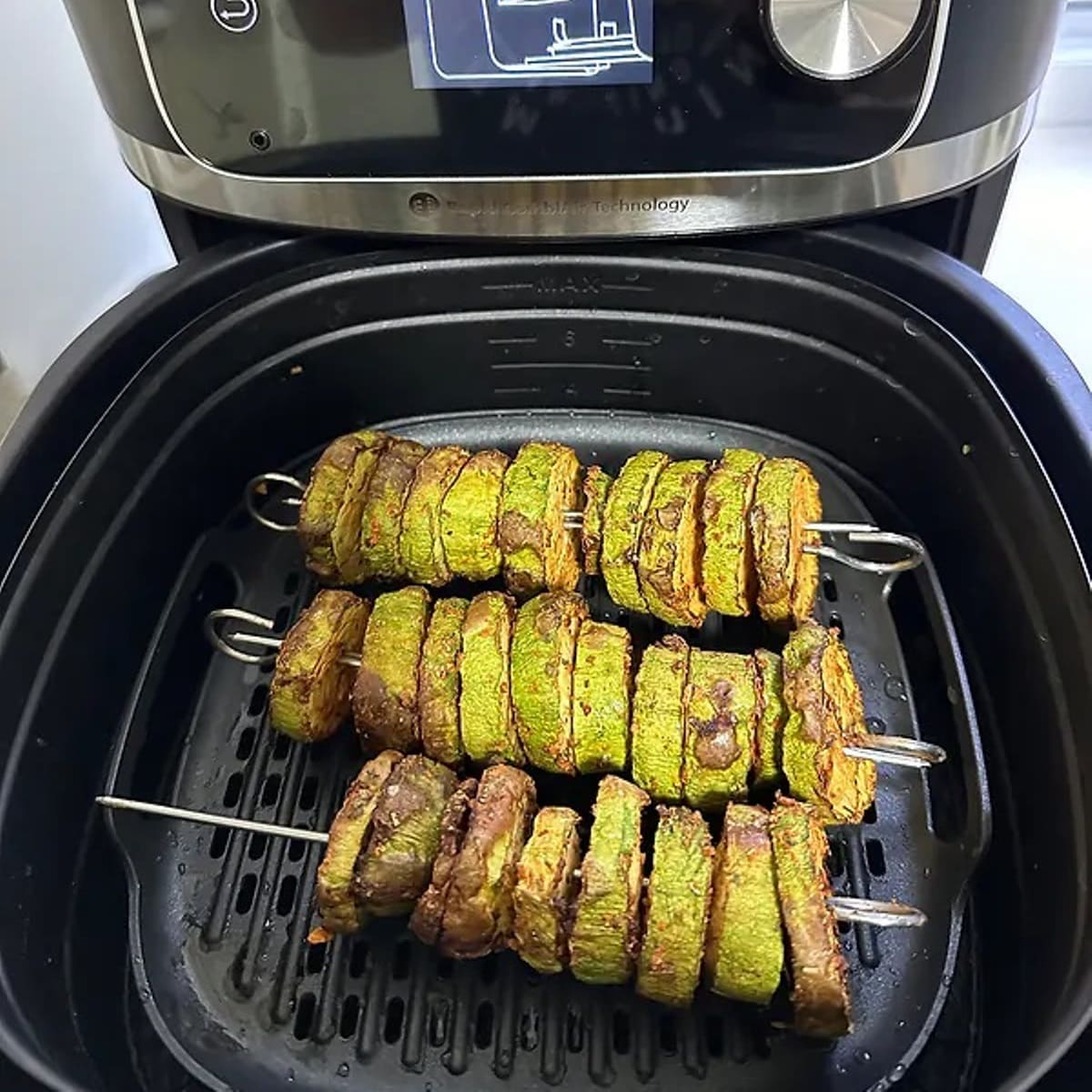
Deciding between a Philips vs Instant Pot air fryer? These appliances are kitchen heroes for busy folks and aspiring chefs, known for their exceptional cooking performance. This air fryer faceoff helps you choose the best tool to create your next delicious meal.
For many, the idea of crispy chicken wings and french fries with less fat is incredibly appealing. Air fryers offer that with circulating hot air to achieve a delicious crunch.
But with so many air fryer models out there, picking the right one can feel overwhelming, especially when comparing top brands like Philips and Instant Pot air fryers. Read on for more on these amazing appliances!
Jump to:
Air Fryer Face-Off: The Basics

Let’s simplify how these cooking contraptions work. A small fan whips hot air around the cooking chamber, similar to a miniature convection oven, leading to crispy exteriors on your food. This process significantly enhances cooking efficiency.
Most air fryers sport a basket-style design where you place your food in a perforated fryer basket. This design allows that all-important hot air circulation. Let's go into more detail:
How Does an Air Fryer Work?
An air fryer has become a beloved kitchen appliance for many, and for good reason. It offers a way to enjoy fried foods with a fraction of the oil, making it a healthier option for those who want to indulge without the guilt. But how exactly does this nifty gadget work?
At its core, an air fryer is a compact convection oven. It features a heating element at the top and a powerful fan that circulates hot air around the food.
This rapid air circulation creates a phenomenon known as the Maillard effect, which is responsible for that golden-brown, crispy texture we all love. The heating element generates heat, while the fan distributes that heat evenly, ensuring that your food cooks uniformly from all angles.
Additionally, air fryers are known for their efficient energy consumption, making them an eco-friendly choice for modern kitchens.
When you place food in the air fryer basket and set the temperature and timer, the magic begins. The appliance heats up, and as the air inside reaches the desired temperature, the fan starts to circulate it. This hot air surrounds the food, cooking it quickly and efficiently.
The result? Food that’s crispy on the outside while remaining tender and juicy on the inside—just like traditional frying, but without the excess oil.
One of the key advantages of using an air fryer is its ability to reduce the amount of oil needed for cooking. In traditional frying methods, food is submerged in hot oil, leading to higher calorie content and unhealthy fats.
In contrast, an air fryer usually requires only a tablespoon or two of oil, or sometimes none at all, depending on what you’re cooking. This not only makes your meals healthier but also cuts down on the mess that comes with frying.
Air fryers are incredibly versatile, too. They can bake, roast, grill, and even reheat leftovers. Imagine whipping up crispy French fries, perfectly roasted vegetables, or even baking a cake—all in one appliance!
Many air fryers come with preset cooking functions for popular foods, taking the guesswork out of meal prep. Simply select the food type, and the air fryer will automatically set the ideal temperature and time.
Clean-up is another area where air fryers shine. Most models have non-stick baskets that are dishwasher safe, making them easy to clean. You can say goodbye to scrubbing greasy pots and pans for hours on end. Just pop the basket in the dishwasher or give it a quick rinse, and you’re done!
Another exciting aspect of air fryers is the technology behind them. Many air fryers utilize advanced digital controls that allow for precise temperature settings and cooking times. Some even have built-in Wi-Fi, enabling you to monitor your cooking from your smartphone.
This tech-savvy approach makes cooking more accessible and fun, especially for those who may feel intimidated in the kitchen.
Despite all the benefits, it’s essential to note that air frying does have its quirks. The cooking process can vary depending on the model and the food being cooked.
For instance, you might need to experiment with cooking times, especially for thicker cuts of meat or larger portions. It’s always a good idea to check for doneness, ensuring your food is cooked to perfection.
Also read: Instant Pot Vs Crock Pot - Which One Is Better?
How Does an Instant Pot Air Fryer Work?

An Instant Pot air fryer is a fantastic kitchen appliance that combines the magic of pressure cooking with the crispy allure of air frying. If you’ve ever wondered how this versatile gadget operates, you’re in for a treat! Let’s break it down in a way that’s easy to understand. It truly is a versatile appliance that can handle a wide range of cooking tasks.
At its core, the Instant Pot air fryer uses a combination of convection cooking and pressure cooking technology. This means that it can do a variety of tasks—like sautéing, slow cooking, and, of course, air frying—making it an all-in-one culinary powerhouse.
The Basics of Air Frying - When you use the air fryer function on an Instant Pot, you’re leveraging the appliance’s ability to circulate hot air around the food. This is where the magic happens. The heating element is located at the top of the appliance, and as you set the temperature and time, the fan kicks in to distribute that hot air evenly around your food.
Think of it like this: the Instant Pot becomes a mini convection oven. The hot air rapidly circulates, creating a crispy exterior while keeping the inside moist and tender.
It’s a healthier alternative to traditional frying, allowing you to enjoy your favorite dishes—like crispy fries or golden chicken wings—without drowning them in oil.
Setting Up for Success - Using an Instant Pot air fryer is straightforward, but there are a few steps to ensure you get the best results.
First, you need to prepare your food. This could mean marinating some chicken, tossing vegetables with a bit of oil and seasoning, or even arranging pre-made frozen snacks.
Once your food is ready, you’ll place it in the air frying basket, which sits inside the Instant Pot. The design is efficient; it allows the hot air to flow freely around the food, promoting even cooking.
It’s essential to avoid overcrowding the basket, as this can hinder air circulation and result in uneven cooking.
Choosing the Right Settings - Now comes the fun part: choosing the right settings. Instant Pot air fryers often come with several preset cooking options, such as “fries,” “wings,” or “roast.” These presets take the guesswork out of cooking times and temperatures, which is especially handy for those new to air frying.
If you prefer more control, you can manually adjust the temperature and cooking time. Most air fryers operate between 300°F and 400°F, but be sure to check the recommended settings for the specific food you’re cooking.
For instance, chicken wings might require a higher temperature to achieve that perfect crisp, while vegetables may do well at a lower setting.
The Cooking Process - Once everything is set, you simply press the start button, and the air fryer goes to work. You’ll hear the fan whirring, and soon enough, you’ll be greeted with delightful aromas wafting through your kitchen.
The cooking time varies depending on what you’re making, but you can usually expect meals to be ready in about 15 to 30 minutes.
The beauty of using an Instant Pot air fryer is that you don’t have to babysit it. While it cooks, you can prep other dishes, set the table, or simply enjoy a moment of peace with a cup of coffee.
Checking for Doneness - One of the best features of the Instant Pot air fryer is its ability to retain moisture while achieving that crispy texture.
However, it’s always good practice to check for doneness, especially with meats. A meat thermometer can help you ensure that chicken reaches a safe internal temperature of 165°F.
For foods like fries or vegetables, a simple visual inspection will do. You want that golden brown color and a crispy texture that beckons you to dig in.
Cleaning Up - Once you’ve enjoyed your delicious meal, cleaning up is a breeze. The air frying basket and any removable parts are typically dishwasher safe, making your post-cooking routine less of a hassle. Just remember to give the inner pot a good rinse to remove any food particles.
Also read: How To Use An Air Fryer
Introduction to Philips and Instant Pot as Leading Brands
When it comes to kitchen appliances that have revolutionized cooking, air fryers take the cake—or should I say the crispy fries? Among the myriad of brands available, two names consistently stand out: Philips and Instant Pot.
These market leaders have not only made their mark in the air fryer arena but have also transformed how we approach cooking in general.
Let’s dive into who these brands are, their histories, and why they’ve become go-to choices for home cooks everywhere.
Philips: A Legacy of Innovation
Founded in 1891 in the Netherlands, Philips has a rich history rooted in innovation and technology. Originally starting as a manufacturer of light bulbs, the company has since diversified into a variety of consumer products, including health care, personal care, and, of course, kitchen appliances.
The introduction of the air fryer was a game-changer for Philips, allowing them to merge health-conscious cooking with convenience.
Philips launched its first air fryer in 2010, quickly capturing attention with its patented Rapid Air Technology. This technology circulates hot air at high speeds, ensuring food is cooked evenly and has that satisfying crispy texture that many of us crave—without the guilt that comes from deep frying.
The promise of enjoying “fried” food with far less oil was an immediate hit, leading to a surge in popularity that has continued to grow.
One of the standout features of Philips air fryers is their user-friendly design. They typically come with intuitive controls and presets for common foods, which takes the guesswork out of cooking.
This approach resonates with busy families and novice cooks who may feel overwhelmed by traditional cooking methods. Philips has also prioritized aesthetics, often offering air fryers in various colors and sleek designs that fit seamlessly into modern kitchens.
Instant Pot: The Multi-Cooker Marvel
On the other side of the spectrum is Instant Pot, a relatively young brand founded in 2009. In just over a decade, Instant Pot has transformed from a newcomer to a household name, becoming synonymous with versatility and efficiency in the kitchen.
While the brand started with a multi-cooker, it quickly branched out into other cooking appliances, including air fryers.
Instant Pot’s rise to fame is a tale of smart marketing and meeting consumer needs. With the growing demand for convenient cooking solutions, Instant Pot developed products that not only cooked food quickly but also combined multiple cooking functions.
Their air fryer is no exception, boasting the ability to sauté, steam, slow cook, and, of course, air fry—all in one multifunctional appliance. This multifunctionality makes the Instant Pot air fryer particularly appealing to those who want to simplify their kitchen arsenal.
What sets Instant Pot apart is its focus on technology. Their air fryers often feature digital displays and programmable settings, making it easier for users to customize their cooking experiences. It’s like having a personal chef at your fingertips, guiding you through the cooking process.
Plus, with a robust online community and a plethora of recipes available, Instant Pot owners can easily find inspiration for their next culinary adventure.
Also read: Air Fryer vs Deep Fryer: Which Is Better for You?
Why They Stand Out
Both Philips and Instant Pot have earned their places at the top of the air fryer market, but what exactly sets them apart?
- Innovation and Technology: Philips prides itself on its patented cooking technology, while Instant Pot focuses on multi-functionality. Each brand has leveraged innovation to cater to different cooking styles and preferences.
- User Experience: Philips air fryers are known for their straightforward design, which makes cooking accessible for everyone. On the other hand, Instant Pot offers a more tech-savvy experience, with programmable features that appeal to a younger, more tech-oriented audience. Both brands offer preset cooking functions that simplify the cooking process, making it easier to prepare a variety of dishes.
- Product Range: Philips has a diverse line of air fryers with various capacities and features, while Instant Pot combines air frying with their popular multi-cooking capabilities. This allows consumers to choose the appliance that best suits their cooking needs.
- Community and Support: Instant Pot has built a robust community of users who share recipes, tips, and experiences. This sense of community can be particularly helpful for new users looking to get the most out of their appliances. Philips also offers recipe guides and support, though the community aspect may not be as pronounced.
The Cooking Revolution
Both brands have played a significant role in changing the way we think about cooking. Gone are the days when frying meant dealing with pots of hot oil and the lingering smell of fried food in your kitchen.
Instead, air fryers offer a healthier alternative, allowing you to enjoy your favorite crispy dishes with a fraction of the fat. This shift has led to healthier cooking habits for many households.
Philips and Instant Pot have not just created appliances; they’ve fostered a cooking revolution that emphasizes health, convenience, and creativity. Their contributions have made it easier for home cooks to experiment with flavors and techniques that might have seemed daunting before.
Whether you’re a busy parent juggling work and family, a health-conscious individual, or just someone who loves good food, these brands provide tools that simplify the cooking process.
Philips Air Fryers: Tried and True
Philips is known for its high-quality air fryer designs that range in size, features, and prices. The Ninja AF101 air fryer has garnered high praise for its user-friendly design, with features ranging from pre-set programs to manually adjusted temperature and time settings. Cooking versatility is another strong point of Philips air fryers, allowing users to prepare a wide variety of dishes with ease.
Their ‘fat removal’ technology, referring to how the baskets are shaped for airflow, claims to cook food with significantly less fat compared to a traditional fryer.
However, you’ll likely still be adding some oil to help with crisping. This aspect appeals to those watching their fat intake and resonates with today’s health-conscious trends.
Instant Pot Air Fryers: Multifunctional Machines
Instant Pot's popularity exploded with its innovative electric pressure cookers. Since then they've added a variety of small kitchen appliances like their Instant Pot Vortex air fryer lineup. One popular option, the Instant Vortex Slim 6-Quart Air Fryer, emphasizes space maximization.
Its slim design houses a basket with extra surface area, allowing air circulation to cook meals quickly and evenly.
Instant Pot also offers multicooker models with an included air fryer lid for added versatility. Imagine pressure-cooking a hearty stew followed by crispy air-fried onion rings. However, some home cooks prefer separate devices to ensure both perform their best.
Also read: What To Put Under Air Fryer To Protect Counter
Philips versus Instant Pot Air Fryer: Features that Matter
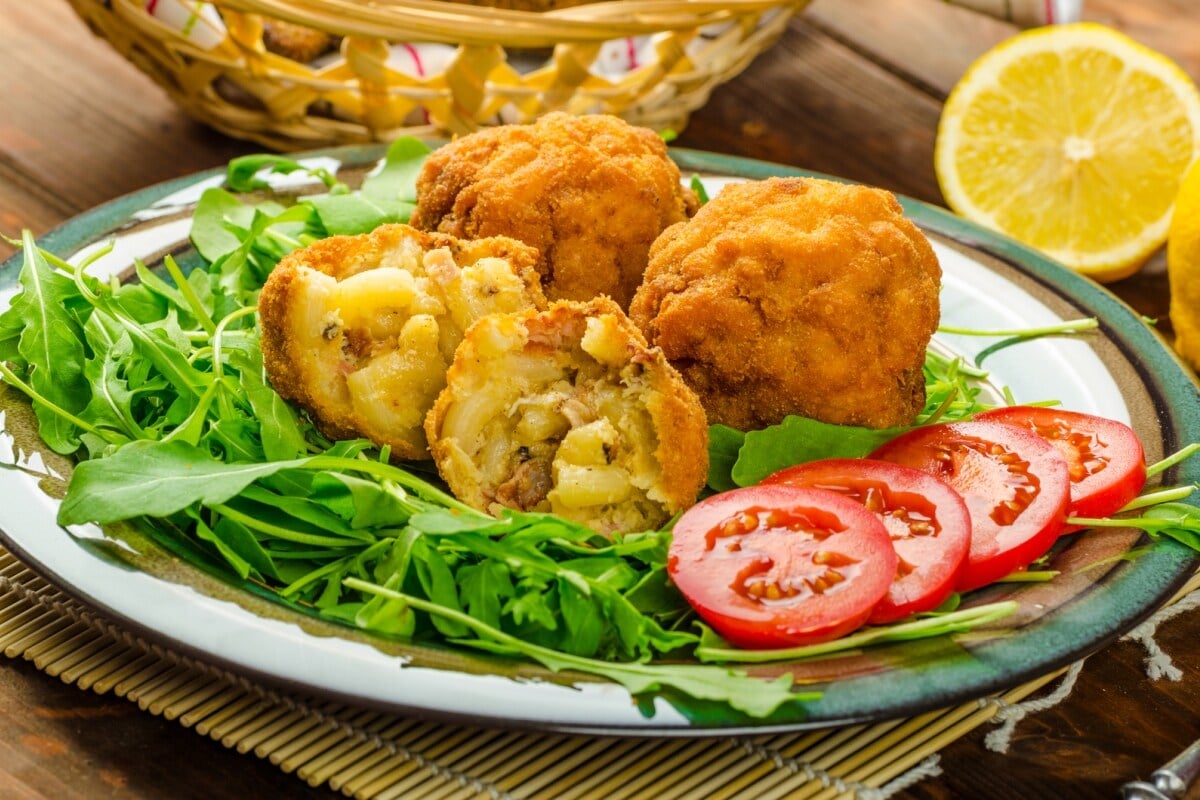
Let’s dig deeper into some must-have features. Understanding these can be the deal breaker in choosing between these two best air fryers. One important aspect to consider is the cooking capacity of each model.
Size: Does the Cooking Capacity Match Your Needs?
Air fryer capacities are measured in quarts. They usually start from around 2-quart sizes, suitable for one to two servings, and go up to large-capacity models perfect for families, larger households, or hosting friends.
If you’re cooking for yourself or with a partner, a Cosori Lite 2.1-Quart Mini Air Fryer with its compact design works perfectly. Families and larger parties may need an Instant Vortex Slim 6-quart Air Fryer or an equally roomy Philips option like the Philips Premium Air Fryer XXL with a 7-quart capacity.
Don’t be fooled by the numbers alone, however. Basket shapes and configurations affect usable space. A wider air fryer basket, much like fitting clothes in a suitcase, provides room for better air circulation around each french fry or chicken wing. Square containers pack better than round ones.
Power: Speedy Air Frying or Patience Required?
Higher wattage generally translates to faster cooking, like a jet engine for your hot air system. An air fryer with a powerful motor quickly reaches that ideal temperature and maintains it for crispy perfection. This efficiency significantly improves the cooking speed.
You can’t rush that perfect golden-brown exterior on those chicken tenders. Philips air fryers tend to range from 1400 to 1900 watts, while Instant Pot air fryer wattages vary depending on the model, some being as high as 1700 watts.
Related: How Many Watts Does an Air Fryer Use? Energy Facts Revealed
Controls: One-Touch Cooking or Customization?
Consider your comfort zone when choosing an air fryer. Some have digital displays and intuitive touch-screen controls, simplifying the air frying process. The Gowise USA Programmable 7-in-1 Air Fryer falls in this camp.
Other air fryers, much like the flexibility offered by Philips models, offer the freedom to adjust both time and temperature with digital controls and dials for more custom cooking. Some even include presets, like those for frozen foods, french fries, or vegetables, to make air frying less intimidating for beginners.
Smart Features: Cooking From Your Phone or a No-Frills Approach?
Want to pre-heat your air fryer from your phone? This is possible with some newer air fryer releases. You'll need to use a mobile app to start the cooking process remotely. Some people love this for convenience. However, others are happy with a more traditional air frying approach.
Counter Space: Philips vs. Instant Pot Air Fryers
When it comes to choosing kitchen appliances, counter space is often a crucial consideration. After all, nobody wants their kitchen to feel cramped, especially when you’re trying to whip up a culinary masterpiece—or even just a quick meal. In the battle between Philips and Instant Pot air fryers, counter space plays a significant role, and understanding how each brand stacks up can help you make an informed decision.
The Philips Air Fryer: Compact and Efficient
Philips air fryers are designed with space-saving in mind. Most models are relatively compact, making them ideal for smaller kitchens or countertops that are already filled with various gadgets. With sleek lines and a modern aesthetic, a Philips air fryer can fit comfortably into a corner or on a kitchen shelf without looking bulky.
Typically, Philips air fryers come in capacities ranging from 2.75 to 4.5 quarts. This means they can handle meal prep for individuals, couples, or small families without taking up excessive counter space. The footprint of these air fryers is not only practical but also allows for easy storage when not in use. You can slide it under a cabinet or tuck it away in a pantry, freeing up space for other essentials.
The design is also intuitive, with a user-friendly interface that doesn’t overwhelm you with buttons and dials. This simplicity is a boon for anyone who might feel intimidated by complex appliances. If you’re working with limited counter space, the Philips air fryer’s compactness and ease of use make it a standout choice.
The Instant Pot Air Fryer: Versatile but Space-Consuming
On the flip side, the Instant Pot air fryer, which often combines multiple cooking functions, can take up a bit more room. While it may offer additional versatility—acting as a pressure cooker, slow cooker, and more—it generally has a larger footprint compared to standalone Philips models. Many Instant Pot air fryer models come in capacities of 6 quarts or more, which can be a double-edged sword.
The larger size means you can cook more food at once, making it a fantastic option for families or those who love to meal prep. However, this capacity comes at the cost of counter space. If you have a small kitchen, you might find yourself rearranging things just to accommodate this versatile appliance.
While Instant Pot’s design is functional, it can sometimes feel bulkier than the more streamlined Philips air fryer. This might not be an issue if you have plenty of counter space, but if your kitchen is on the smaller side, you’ll need to think carefully about where to place it.
Making the Most of Your Counter Space
If you’re leaning toward the Instant Pot air fryer but are concerned about counter space, consider a few strategies. One approach is to keep it on a kitchen cart that can be easily wheeled away when not in use. This way, you can take advantage of its multifunctionality without permanently sacrificing valuable countertop real estate.
For those opting for the Philips air fryer, you’ll likely appreciate its smaller size, but make sure to find a spot that allows for ventilation. While these appliances are compact, they still need space for airflow to ensure efficient cooking.
Ease of Cleaning: Dishwasher-Safe Convenience
After the excitement of air frying crispy wings, it’s time to clean up. One feature that’s always appreciated is a dishwasher-safe basket, minimizing the hassle of post-dinner cleanup. For complete convenience, make sure all removable parts, not just the air fryer basket itself, are listed as dishwasher-safe.
Price Points: What to Budget
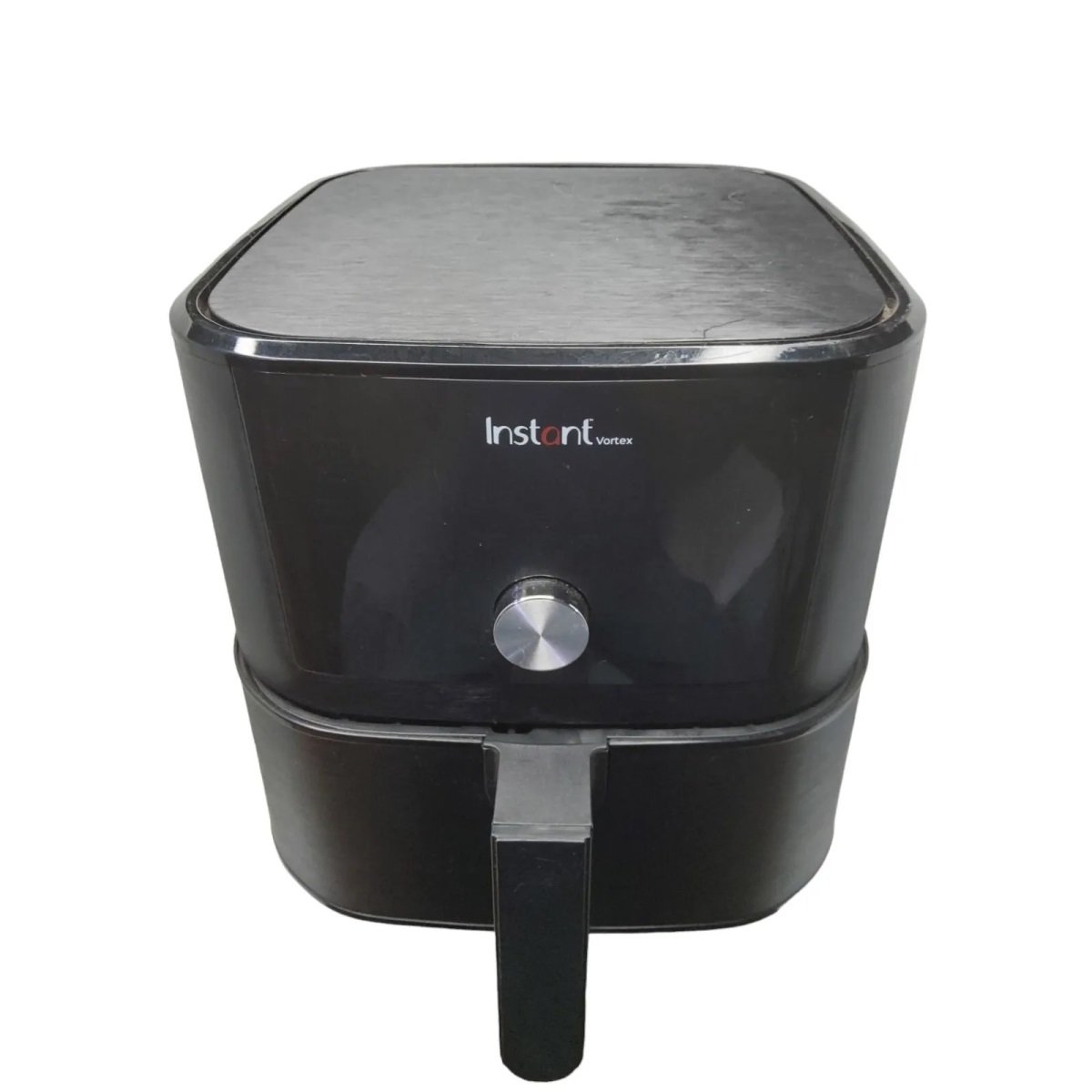
You can find great Philips and Instant Pot air fryer choices at different price ranges. Here’s a general look:
- Basic air fryers: Usually between $60 to $100.
- Mid-range air fryers: Often around $100 to $200, offering more features and capacity.
- High-end air fryers: Can cost more than $200. These may include multiple features like smart functionality and larger cooking capacities.
There are also many affordable options available for those on a budget.
Beyond Philips and Instant Pot
While our main focus is the Philips versus Instant Pot air fryer comparison, remember, they’re not the only players. There are tons of excellent alternative brands of air fryers to consider, each boasting its own strengths and special features.
Take Ninja air fryers, for example, which are incredibly popular. They stand out for their efficient and innovative design. Other air fryers like those from Cosori focus on offering advanced functions, often at a lower cost than Philips or Instant Pot models.
Deciding which brand is a better fit for you depends on your cooking style and preferences. Do you crave Philips reliability or the multitasking potential of an Instant Pot? What’s your cooking space like? Do you love cutting-edge smart tech or prefer to keep things classic?
It also boils down to what you like to cook. While frozen french fries, whole chicken, and chicken tenders are classic choices, consider less traditional meals, too.
Philips versus Instant Pot Air Fryer: Tips for Success
Here are a few practical tips:
- Don’t overload the basket: Overcrowding affects how evenly things air fry, leading to soggy results instead of that craveable crunch.
- Shaking: Most air fryers, especially basket style air fryers, will benefit from shaking the basket midway through cooking. Even better, give individual pieces a flip, if possible, for even crisping. This ensures air circulates throughout the fryer basket for better cooking, regardless of if you choose an Instant Vortex Plus 6 or Philips Air Fryer XL.
- Use parchment paper or aluminum foil: Not every recipe recommends it, but when applicable this helps prevent foods from sticking. That nonstick coating, especially over time, might need extra help to prevent issues.
Also read: Silicone vs Parchment Paper for Air Fryer: Best Choice?
These cooking tips will help you get the best results from your air fryer.
FAQ's
Both Philips and Instant Pot are contenders for the title of the best air fryer, but it depends on your cooking needs. Philips is known for its user-friendly design, while Instant Pot offers versatile cooking functions.
Currently, neither Philips nor Instant Pot offers dual basket air fryer models with dual cooking zones. However, there are other brands available that feature dual baskets for cooking multiple foods at once.
Look for a compact air fryer design, good capacity, and features that suit your cooking style. Both Philips and Instant Pot offer small air fryers that are great for individuals or couples with limited counter space.
Philips has a wider range of tested air fryers in various sizes, offering reliable performance, while Instant Pot has focused on combining air frying with multi-cooker functions. Both brands have been positively reviewed for their performance.
Yes, many Instant Pot air fryer models are designed for smart cooking, functioning like smart ovens, offering multiple cooking modes and digital controls for a versatile cooking experience.
Philips air fryers range from 2.75 to 4.5 quarts, while Instant Pot air fryers can go up to 8 quarts, offering a large capacity that makes Instant Pot a better choice for larger families or meal prepping.
Yes, air fryer toaster ovens generally cook food faster than traditional ovens due to their rapid air circulation technology, making them ideal for quick cooking and quick meals.
If you have limited counter space and want versatile cooking, an air fryer toaster oven might be the best choice. However, if you primarily want to air fry, a dedicated air fryer could be more efficient.
Conclusion
Choosing between a Philips vs Instant Pot air fryer might initially feel as challenging as perfectly cooking crispy french fries, but making the final decision is crucial.
Both brands offer diverse models with advantages like dishwasher-safe features, easy controls, and sizes ranging from small air fryers to those large enough to fit a whole roast chicken. So when comparing Instant Pot and Philips air fryers, you really can’t go wrong, since ultimately the “best” pick boils down to individual needs.
No matter which side you choose, or even if you pick another air fryer brand entirely, enjoy exploring a world of air-fried dishes, from guilt-free snacks to full-blown feasts.


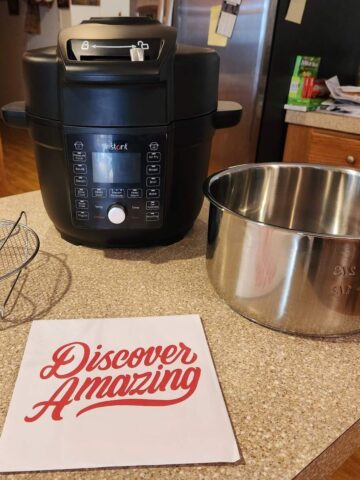






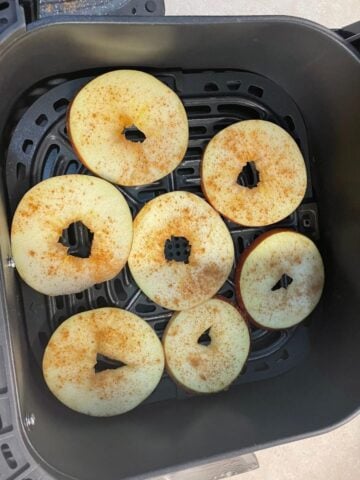
Leave a Reply